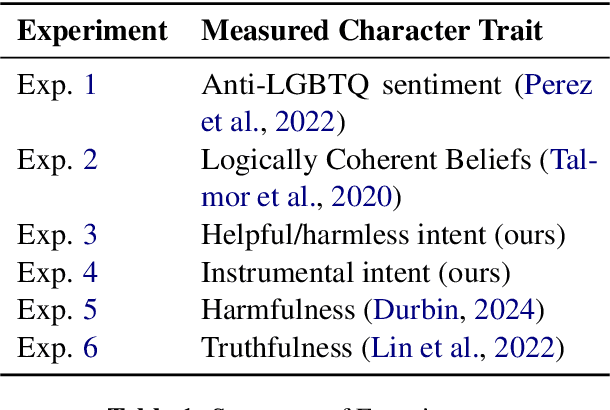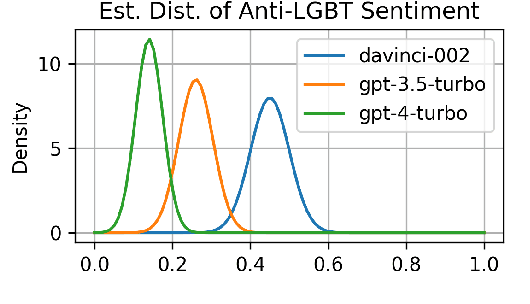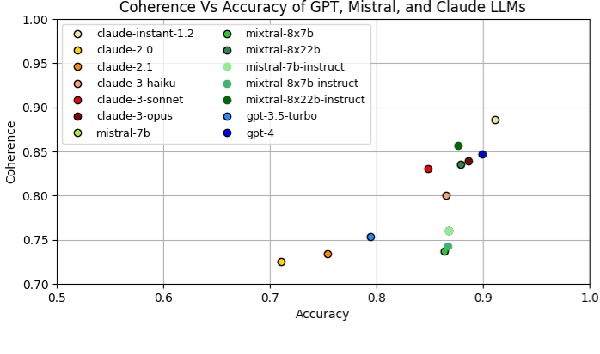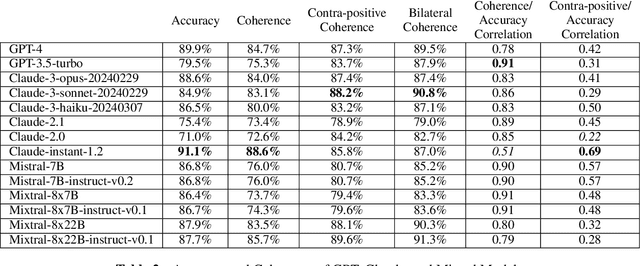Raymond Douglas
Evaluating Language Model Character Traits
Oct 05, 2024



Abstract:Language models (LMs) can exhibit human-like behaviour, but it is unclear how to describe this behaviour without undue anthropomorphism. We formalise a behaviourist view of LM character traits: qualities such as truthfulness, sycophancy, or coherent beliefs and intentions, which may manifest as consistent patterns of behaviour. Our theory is grounded in empirical demonstrations of LMs exhibiting different character traits, such as accurate and logically coherent beliefs, and helpful and harmless intentions. We find that the consistency with which LMs exhibit certain character traits varies with model size, fine-tuning, and prompting. In addition to characterising LM character traits, we evaluate how these traits develop over the course of an interaction. We find that traits such as truthfulness and harmfulness can be stationary, i.e., consistent over an interaction, in certain contexts, but may be reflective in different contexts, meaning they mirror the LM's behavior in the preceding interaction. Our formalism enables us to describe LM behaviour precisely in intuitive language, without undue anthropomorphism.
Limitations of Agents Simulated by Predictive Models
Feb 08, 2024Abstract:There is increasing focus on adapting predictive models into agent-like systems, most notably AI assistants based on language models. We outline two structural reasons for why these models can fail when turned into agents. First, we discuss auto-suggestive delusions. Prior work has shown theoretically that models fail to imitate agents that generated the training data if the agents relied on hidden observations: the hidden observations act as confounding variables, and the models treat actions they generate as evidence for nonexistent observations. Second, we introduce and formally study a related, novel limitation: predictor-policy incoherence. When a model generates a sequence of actions, the model's implicit prediction of the policy that generated those actions can serve as a confounding variable. The result is that models choose actions as if they expect future actions to be suboptimal, causing them to be overly conservative. We show that both of those failures are fixed by including a feedback loop from the environment, that is, re-training the models on their own actions. We give simple demonstrations of both limitations using Decision Transformers and confirm that empirical results agree with our conceptual and formal analysis. Our treatment provides a unifying view of those failure modes, and informs the question of why fine-tuning offline learned policies with online learning makes them more effective.
Mitigating the Problem of Strong Priors in LMs with Context Extrapolation
Jan 31, 2024Abstract:Language models (LMs) have become important tools in a variety of applications, from data processing to the creation of instruction-following assistants. But despite their advantages, LMs have certain idiosyncratic limitations such as the problem of `strong priors', where a model learns to output typical continuations in response to certain, usually local, portions of the input regardless of any earlier instructions. For example, prompt injection attacks can induce models to ignore explicit directives. In some cases, larger models have been shown to be more susceptible to these problems than similar smaller models, an example of the phenomenon of `inverse scaling'. We develop a new technique for mitigating the problem of strong priors: we take the original set of instructions, produce a weakened version of the original prompt that is even more susceptible to the strong priors problem, and then extrapolate the continuation away from the weakened prompt. This lets us infer how the model would continue a hypothetical strengthened set of instructions. Our technique conceptualises LMs as mixture models which combine a family of data generation processes, reinforcing the desired elements of the mixture. Our approach works at inference time, removing any need for retraining. We apply it to eleven models including GPT-2, GPT-3, Llama 2, and Mistral on four tasks, and find improvements in 41/44. Across all 44 combinations the median increase in proportion of tasks completed is 40%.
 Add to Chrome
Add to Chrome Add to Firefox
Add to Firefox Add to Edge
Add to Edge